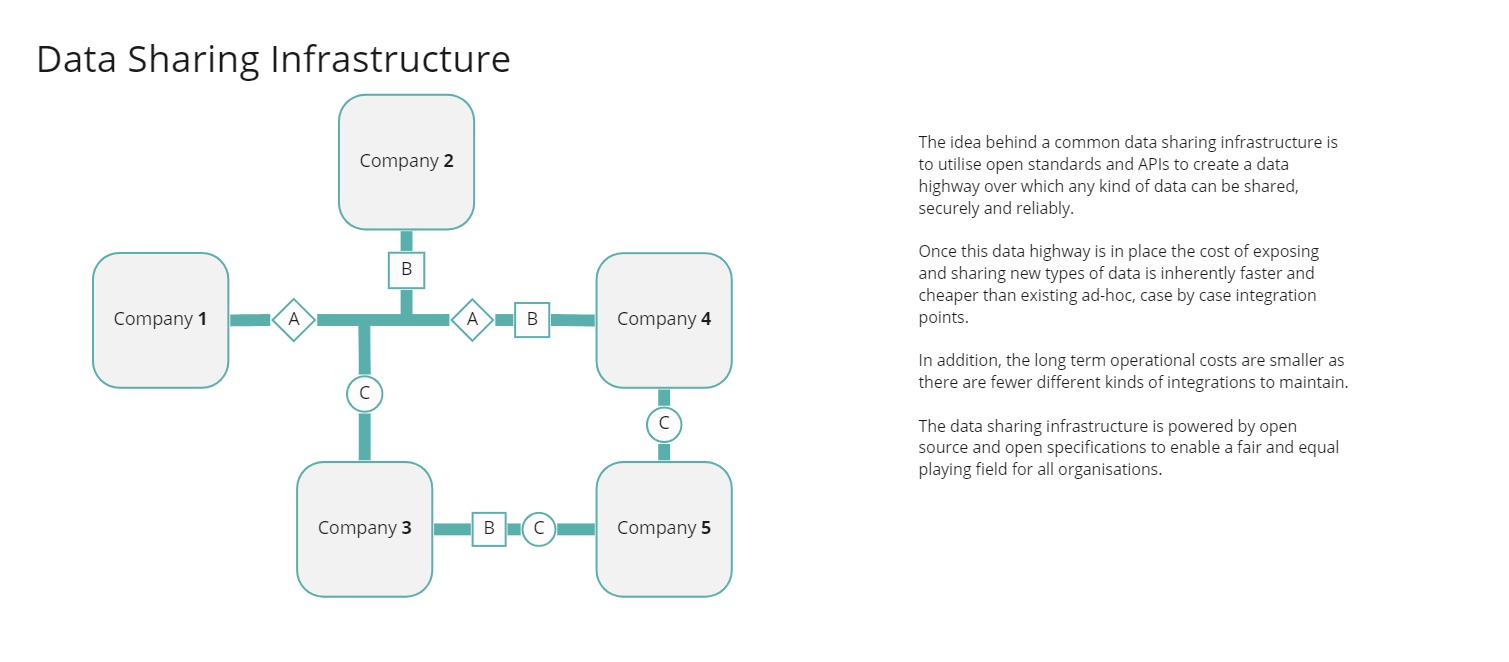A Vision for a Data Sharing Infrastructure in the Agriculture Industry¶
The IT spend in the agriculture sector (and many other industries) on solving the core problem of data exchange is (in Norway alone) in the range of 10’s MNOK a year, with the delayed opportunity cost even higher. One unfortunate aspect of this is that the spend often goes towards single points of integration for one-off needs and requirements. There is very little long-term planning in the machinery built to share data between organisations. This negatively impacts the speed at which innovation can occur and the speed at which data can be exchanged to support business needs.
To give an analogy that highlights this waste even more, consider five cities who want to sell goods in each other’s markets. Sadly, these cities are not connected. Each city has different types of goods that need to be transported and sold. Each of the cities takes stock of the goods that need to be transported and start building roads dedicated to that type of good between itself and every other city. The result is many different roads with different capabilities connecting these cities. When a new type of good is to be sold, cities build new kinds of roads dedicated to transporting that kind of good. This is obviously madness but is often what happens when setting up new data integrations. What would make more sense in the analogy would be for there to be just one road between the cities that could transport and deliver any kind of good. Likewise, setting up a data sharing infrastructure just once that could serve many of the needs of organisations exchanging data would have a profound effect on the speed of innovation and value creation. Specifically, in agriculture it would mean farmers, through their cooperatives, would be paying consultants less for basic IT services and more for value creation.

To achieve this requires organizational and political will, but it also requires technical foundations that are low in cost and complexity to adopt. Specifically, it requires a generic data sharing API that is capable of reliably exchanging any kind of data (it separates the sharing from what it shared). This API must have clear and simple semantics that enable the reliable, scalable and secure exchange of data. There is also a need for a data representation that allows any kind of data to be represented in the same way – without defining canonical, domain specific models.
This data sharing infrastructure (the API and the data representation) cannot be proprietary. It must be built on open data exchange specifications and open-source software. It must be possible for any organisation to rapidly deploy and reap the benefits of the investment, and not be beholden to any product company or consultancy.
At MIMIRO we are staffed with experienced people that have authored and edited ISO and OASIS standards for data exchange, authored W3C notes on data exchange and built entire companies dedicated to providing data interchange solutions. We have taken all that experience and bundled it into a set of open specifications and open-source software that can be the enabler for this data sharing vision. All the specifications and software developed to support these ideas can be found at MIMIRO Open.
MIMIRO is working with partners in the agriculture industry in Norway to set up this data sharing infrastructure. However, it should be noted that this kind of data infrastructure can be applied to many industries and internally at organisations with sufficiently complex data sharing needs.